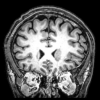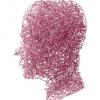http://www.ncbi.nlm....pubmed/25259918
Cell. 2014 Sep 25;159(1):33-45. doi: 10.1016/j.cell.2014.07.051.
Skeletal muscle PGC-1α1 modulates kynurenine metabolism and mediates resilience to stress-induced depression.
Agudelo LZ1, Femenía T2, Orhan F3, Porsmyr-Palmertz M1, Goiny M3, Martinez-Redondo V1, Correia JC1, Izadi M1, Bhat M4, Schuppe-Koistinen I4, Pettersson AT1, Ferreira DM1, Krook A5, Barres R5, Zierath JR6, Erhardt S3, Lindskog M7, Ruas JL8.AbstractDepression is a debilitating condition with a profound impact on quality of life for millions of people worldwide. Physical exercise is used as a treatment strategy for many patients, but the mechanisms that underlie its beneficial effects remain unknown. Here, we describe a mechanism by which skeletal muscle PGC-1α1 induced by exercise training changes kynurenine metabolism and protects from stress-induced depression. Activation of the PGC-1α1-PPARα/δ pathway increases skeletal muscle expression of kynurenine aminotransferases, thus enhancing the conversion of kynurenine into kynurenic acid, a metabolite unable to cross the blood-brain barrier. Reducing plasma kynurenine protects the brain from stress-induced changes associated with depression and renders skeletal muscle-specific PGC-1α1 transgenic mice resistant to depression induced by chronic mild stress or direct kynurenine administration. This study opens therapeutic avenues for the treatment of depression by targeting the PGC-1α1-PPAR axis in skeletal muscle, without the need to cross the blood-brain barrier.
This seems to be the most easily obtainable strategy for reducing kynurenine in the brain without possible side effects. Can anyone find any ways to enhance PGC-1α1-PPARα/δ pathway activation?
I was looking for non-exotic solutions, and stumbled upon electroacupuncture... ![]()
Med Sci Monit. 2015 Nov 4;21:3356-62.Electroacupuncture Upregulates SIRT1-Dependent PGC-1α Expression in SAMP8 Mice.AbstractBACKGROUND Abnormalities of brain energy metabolism are involved in Alzheimer disease (AD). Sirtuin 1 (SIRT1) is a class III histone deacetylase and activates peroxisome proliferator-activated receptor-γ co-activator-1α (PGC-1α), which enhances mitochondrial biogenesis and energy homeostasis. Electroacupuncture (EA) has been reported to improve brain energy metabolism in AD. However, the effect of EA on SIRT1 and PGC-1α in AD remains unclear. MATERIAL AND METHODS ATP levels were measured using assay kits in the hippocampus and frontal cortex of senescence-accelerated mouse prone 8 (SAMP8) mice. Western blotting analysis and quantitative real-time RT-PCR were performed to measure the expression of SIRT1 and PGC-1a in the hippocampus of SAMP8 mice. PGC-1α acetylation was analyzed using immunoprecipitation. RESULTS Compared with senescence-accelerated resistant mice 1 (SAMR1) mice, SAMP8 mice had a decline in ATP levels and the expression of SIRT1 and PGC-1α. EA treatment improved ATP levels, upregulated the expression of SIRT1 and PGC-1α, and decreased PGC-1α acetylation. CONCLUSIONS These data suggest that EA improved brain energy metabolism, potentially associated with the upregulation of SIRT1-dependent PGC-1α expression.
But also,
J Strength Cond Res. 2015 Aug 28. [Epub ahead of print]ACUTE RESPONSE OF PGC-1α AND IGF-1 ISOFORMS TO MAXIMAL ECCENTRIC EXERCISE IN SKELETAL MUSCLE OF POSTMENOPAUSAL WOMEN.AbstractPGC-1α4, a novel isoform of the transcriptional coactivator PGC-1α, was recently postulated to modulate the expression of anabolic and catabolic genes and therefore regulate skeletal muscle hypertrophy. Resting levels of PGC-1α4 mRNA expression were found to increase in healthy adults after resistance training. However, the acute effect of resistance exercise (RE) on PGC-1α4 expression in populations prone to progressive muscle loss, such as postmenopausal women, has not been evaluated. Here we investigated alterations in mRNA expression of PGC-1α4 and PGC-1α1, a regulator of muscle oxidative changes, in postmenopausal women following high-intensity eccentric RE, and analyzed these findings with respect to changes in IGF-1 and catabolic gene expression. Nine postmenopausal women (57.9 ± 3.2 yr) performed 10 sets of 10 maximal eccentric repetitions of single-leg extension with 20 second rest periods between sets. Muscle biopsies were obtained from the vastus lateralis of the exercised leg before and 4 hours after the RE bout with mRNA expression determined by qRT-PCR. No significant changes in the mRNA expression of either PGC-1α isoform were observed following acute eccentric RE (P > 0.05). IGF-1Ea mRNA expression significantly increased (P < 0.05) while IGF-1Eb and MGF did not significantly change (P > 0.05). PGC-1α4 mRNA expression was associated with reduced mRNA expression of the catabolic gene myostatin (R = -.88, P < 0.01), while MGF mRNA expression was associated with reduced mRNA expression of the catabolic gene FOXO3A (R = -.81, P < 0.05). These data demonstrate an attenuated response of PGC-1α isoforms to an acute bout of maximal eccentric exercise with short rest periods in postmenopausal women.
So if the same holds true of other age/gender groups, then maximal eccentric exercise with short rest periods... My guess is HIIT or SMIT with eccentric exercises would not only help with this, but also have numerous other benefits.






















































